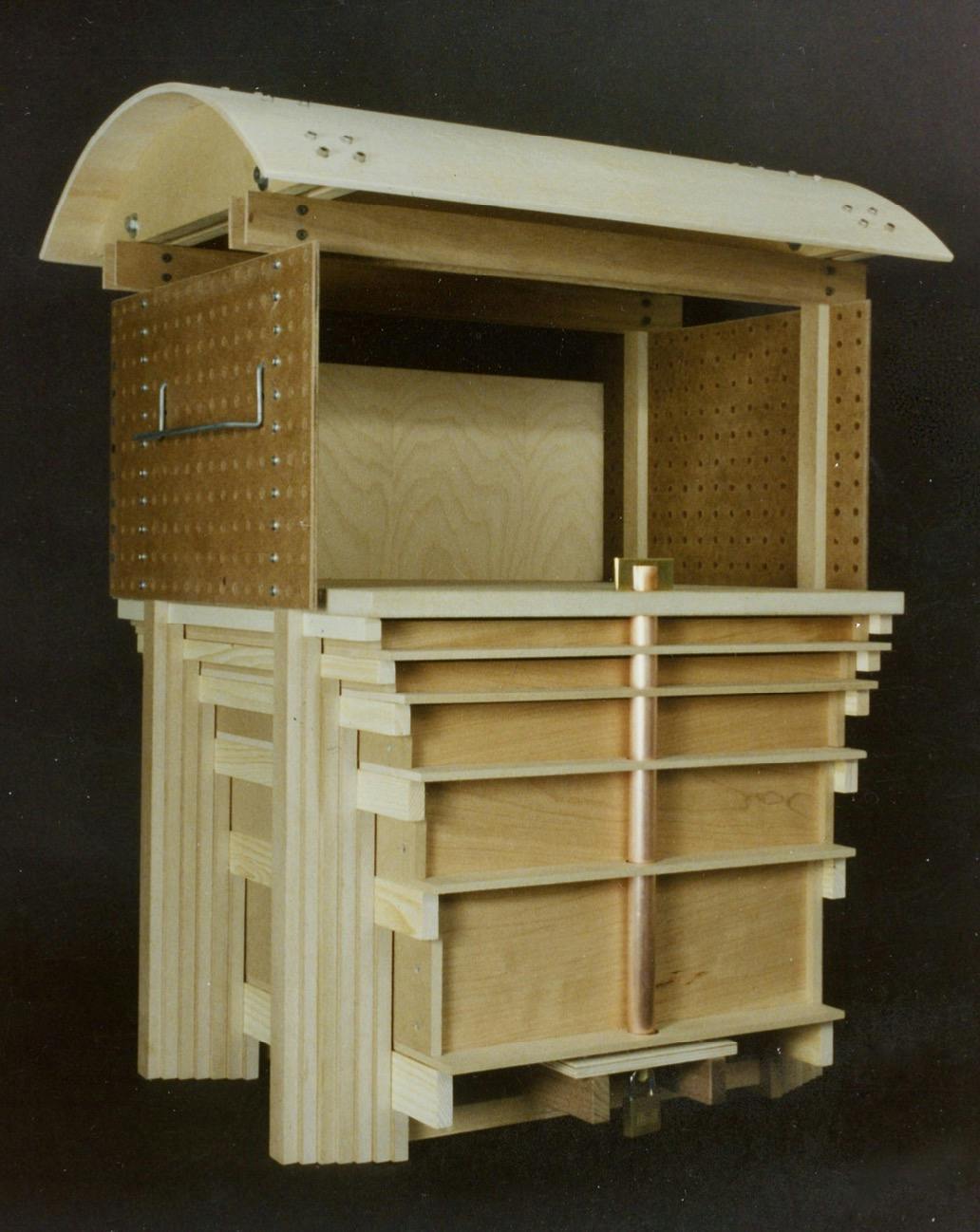2023 Bridges Conference Art Exhibition
Emanuel Jannasch
Artists
Emanuel Jannasch
Senior Instructor
School of Architecture, Dalhousie University
Halifax, Nova Scotia, Canada
Statement
The medium of building isn't a selection of materials but the processes applied. I enjoy rich results arising from economical means. My motor skills aren’t that fine, so I adore a good quality table saw. I’ve made a complete set of regular and semi-regular polyhedra and I’ve explored the seventeen families of tessellation. I understand the mechanical production and functional implication of various curves and surfaces, and I’ve used them as appropriate. But the tectonic potential of rectilinear geometries remains deeply thrilling. The freedom of association, the super-modularity, the translatability of parts in a field of parallels and right angles might be the greatest gift of nature we’ve ever discovered.
Artworks

Undrawn Cabinet for Drawing Tools
86.0 x 66.0 x 54.0 cm
Leftover woods and composites, metals, solder, threaded fasteners, glue, hardware.
1992